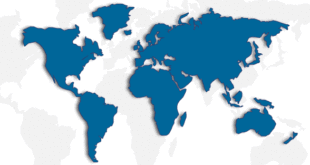Historians place the origin of the collective action in the 17th century in England, referring to the Bill of Peace. This procedure allowed several individuals to solve common issues in the context of a single action brought before the Courts of Chancery, who believed in Equity, and not the rules derived from Common Law. In these proceedings, the applicants should be physically present at the hearing to be legally bound by the judgment. In practice, when the cases involved too many people to allow each physical presence, they were permitted to be represented by one person to present the case on behalf of all applicants. Therefore, the mechanism of the collective action has derived from the Common Law. Nevertheless, it is essentially the American model, initiated in 1966 under the leadership of the pro-lawyer, Ralph Nader, which is the historical model of the collective action from which, or against which, most collective actions have been developed worldwide.
In England, in 2000, new rules were introduced through the English and Wales Civil Procedure Rules Part 19[1]. The new rules introduced the so-called Group Litigation Orders (GLO). Once there are several individual lawsuits that raise common or related questions of fact or law, the group litigation order allows a group of plaintiffs to sue in order to defend their common personal interests.
In France, there was no group litigation procedure, such as the US or the English model. Nevertheless, the class action debate is not a new one. The French background regarding class actions shows how important this issue is. It is French judges themselves, who, first of all, appealed to a kind of class action. According to the so-called “Jurisprudence des ligues de défense” [2], a group of people are allowed to organise themselves to defend their own but shared interests in justice. Therefore, case law on “ad hoc non-profit organizations” developed, as shown by a famous case judged in 1913[3] by the French Supreme Court – Cour de cassation. Narrowing the jurisprudence on consumer matters, the Royer Act[4] was passed on 27 December 1973, creating the action in the collective interest of consumers. In the mid-90s’, consumers and investors protection was reinforced by the creation of a Joint representative action[5].
However, all those legal proceedings have shown their limits very quickly because of their very limited scope. It is only recently that some sort of collective action, like the group litigation order, emerged in France. The so-called Hamon Act [6] created the French class action. This law came into force on October 1st, 2014 after the adoption of a decree on September 24th, 2014[7].
The collective action, both the group litigation order and the French class action can be defined as the action brought by a representative on behalf of a class of persons who have similar rights and lead the delivery of a judgment having authority of res judicata in respect of all group members.
If these two legal systems actually allow any plaintiff to exercise collective action, it should be noted that the English system allows the group litigation order if no other procedure is more appropriate. In France, article L.423-22 of the French Consumer code provides that group membership does not preclude the right to act in the ways of the procedure of ordinary law to obtain compensation for damages not within the scope defined by the judge’s decision. It is therefore necessary to determine the characteristics of these two collective actions to restore the equality of arms between victims debilitated by a common prejudice.
- The major differences between the French class action and the English group litigation order regarding the initiation conditions
The group litigation order has a wider material scope as well as a personal one.
- The limited material scope of the French class action
The French class action differs from the group litigation order by its material scope that can be described as limited. If the group litigation order allows any group to act against the plaintiff breach of a legal or contractual obligation, French law requires that the failure is the result of a professional person (Article L.423-1 of the French Consumer Code). Furthermore, French law requires that such breach has occurred particularly during the sale of goods or the provision of services, while the group litigation order relates to all civil actions, whatever their field.
On one hand, the French class action can only relate to compensation for pecuniary loss resulting from damage suffered by consumers (Article L.423-1 of the French Consumer Code). Therefore, this requirement excludes the repair of physical and non-pecuniary damages.
On the other hand, the English group litigation order makes no mention of any type of injury. Therefore, one can well imagine any kind of damage, including a personal one.
Indeed, in the space of eight years since the establishment of such group litigation order, sixty-two group litigation orders were made and 21% of them were related to the repair of abuse in children’s homes and schools while 15% were repairing environmental damage[8]. One of the most notable examples is still the case against the Royal Liverpool Children’s Hospital and the scandal of organs[9], in which hundreds of parents asked for compensation against the hospital after having discovered that the hospital had secretly preserved parts of stillborn children or deceased bodies.
It is clear that the group litigation order has a wider material scope offering greater possibility of actions, contrary to French law. This is also the case concerning the personal scope.
- The wider personal scope of the group litigation order
Article L.423-1 of the French Consumer Code requires that the class action is the initiative of a group of consumers. These consumers have to be in a « similar or identical situation » and must have suffered a financial loss resulting from material damage, caused by one or more professionals. Accordingly, the consumer is a natural person who is acting for purposes that do not fall within the scope of his craft or profession, trade, business. This definition excludes entities to the benefit of the French class action.
The group litigation order does not allow such a limitation. The group litigation order may be initiated by any plaintiff against anyone who did not comply with its contractual or statutory obligations, whether or not professional.
The French class action also requires that only duly authorised associations for the defence of consumers which are recognised as being representative at a national level (and not ad hoc associations formed to deal with a particular violation) can bring class actions. Fifteen such associations are currently recognized in France. Businesses and professionals cannot participate in class actions, as they are reserved solely for consumers.
This requirement does not apply to the English group litigation order. Indeed, there is no exclusive mandate. However, there is still a representative who must be a member of this group. In fact, the parties shall designate a principal solicitor in charge of coordinating the action on behalf of the applicants or the defendants, to conduct proceedings on their behalf and manage the registry. If there is no agreement between the parties, the court may make the appointment according to the English and Wales Civil Procedures Rules Part 19, section III[10].
The French class action strips all foreign consumer associations of the right to bring a class action in France as foreign associations will never receive a license issued pursuant to article L.411-1 of the French Consumer Code. The solution is regrettable due to it is quite possible that the same professional behaviour harms consumers located in different countries. Indeed, the recent recommendation from the European Commission on collective redress confirms this concern as it states that Member States « should ensure that where a dispute relates to natural or legal persons who are nationals of different Member States, national rules admissibility or standing groups of foreign applicants or other representative bodies within national legal systems do not prevent the introduction of a single collective action in a single jurisdiction « (Commission Recommendation of 11 June 2013[11]).
Thus, the French class action differs from the English one regarding the initiation conditions, but there are still some procedural similarities permitting compliance with the equality of arms principle leading to a decision between the parties.
- Some procedural similarities permitting compliance with the equality of arms principle
Not only the English group litigation order and the French class action have both chosen a two-phase « opt-in » procedure, but the consequences of the decision to intervene on the compensation of the members are also alike.
- The “opt-in” procedure restoring equality of arms between victims
The group membership requires a positive act for the respect of the equality of arms principle. In the first phase, the tribunal or the court rules on the liability of the professional or the defendant based solely on the individual cases presented by the claimant – a claimant association in France as the French consumer code requires. The judge must also identify connecting factors on the basis on which consumers or claimants, who did not initiate the judicial proceedings, would be able to individually seek legal redress later (article L.423-3 of the French Consumer Code). In England, a managing judge is appointed and a Group Register is established for that.
In addition to the ruling on the liability of the professional or the defendant, the judge shall also specify, in the same decision, three points ensuring the claimants’ future compensation[12]:
- Damages that might be compensated and the amount of this compensation or, at the very least, how this amount might be calculated;
- Publicity measures to inform potential claimants, which are likely to belong to the concerned group – at the defendant’s own expense.
- Time limit – between two and six months after the completion of the publicity measures within which potential claimants may elect to join the group, as well as the terms and conditions of such membership. It must be noted that consumers who have not joined the group would be ineligible to claim compensation for damages caused by the same issues and infringements.
The opt-in system, unlike the opt-out system prevalent in the USA, requires a positive act on the part of claimants wishing to participate in the action. Thus, the group will consist only of those who have explicitly expressed their desire to be represented in the proceedings. The European Court of Human Rights has made it clear that a procedure is not contradictory if « the president did not hear the applicant and has not asked to comment” [13]. The judge will ensure that all players were able to enjoy the right to be heard. The breach of equality seems to be inherent to the system of opt out since all the victims are not specifically identified.
Once the plaintiffs have joined the group, the decision will be binding on the whole group for their compensation.
- The similarities regarding the consequences of the decision to intervene
Regarding compensation, as the French system, the English one excludes the treble damages rule introduced in the United States[14]. This law provides that any person, who suffers from its ownership or its business due to the violation of a rule of competition law, has a right of action to obtain a sum equivalent to three times the amount of damages she suffered.
In England and France, conditions of compensation are specified in the declaratory judgment on liability, which may provide either direct payment by the company to members of the class action or indirect payment by the association or the representative member.
In case of difficulty, the duly authorized associations or the representative may bring an action to enforce the same court to obtain the enforcement of the decision and the compensation of individual damages.
Even if the equality of arms principle seems to be respected by those two collective actions, several practical consequences of those actions do not put them on the same footing as it may be observed from a first assessment one year after the Hamon Act came into force.
- The mixed results of the Hamon Act
One year after the Hamon Act came into force, disappointing results may be observed. This may be one of the reasons why the French government is thinking of widening its scope.
- The low number of French class actions initiated
As soon as the Hamon Act came into force, the UFC Que Choisir association launched the first French class action against the real estate company Foncia. A few weeks later, another association (the Consommation Logement et Cadre de Vie) launched a class action against the company Axa. It was followed by the introduction of various class actions against the real estate company 3F, the telephone operator SFR and the social landlord Paris Habitat-OPH that has finally signed a settlement on May 2015.
Yet the impact of the French class action is to be put into perspective one year after it came into force since only a handful of class actions were introduced.
The question of the French class action dates back to several decades and despite the enthusiasm of the first weeks, the French class action presents so many limiting conditions so that it cannot be implemented as easily as the English group litigation order.
Yet there is hope that the French class action will gain momentum in the coming months since the Hamon Act has already planned to extend the scope of the French class action in the health and environment fields.
- A widening material scope considered by the French government
Within thirty months of the Hamon Act enactment (e.g. on September 2016), the Government is invited to submit a report assessing the conditions for implementing the French class action, offering all the necessary changes and considering possible modifications of the scope, especially in the health and environmental fields.
However, the French government did not wait this period of thirty months to submit a new legislative bill introducing a class action for discrimination. A legislative bill called « Justice for the 21st century » was presented in Council of Ministers on July 31st, 2015[15]. This text grants a group of plaintiffs discriminated by the same people the opportunity to come together to prosecute all perpetrators of massive discrimination in the private sector as the public one, in the manner of the United States.
This would be the mean to fight workplace discrimination but this class action would not be limited to that sector.
Nevertheless, another filter is expected: this specific class action would be restricted to representative trade union organizations in the company concerned, on a territorial or a national level or even associations legally constituted for at least five years aimed at fighting discrimination or working in the disability field.
One may observe that an out-of-court phase is considered in order to encourage employers to correct their behaviour. It is only in the case of failure of that phase that the tribunal or the court may be seized.
In conclusion, it follows from this that even if the scope of the French class action will be slightly extended to other areas, it may be necessary to consider a further extension, particularly as regards with its personal scope in order to be more similar to the English group litigation order and its recognized efficacy.
Audrey LEMAL
[1] http://www.justice.gov.uk/courts/procedure-rules/civil/rules/part19
[2] J.VINCENT et S. GUINCHARD, Procédure civile, Précis Dalloz, 200, n°126
[3] Ch. Réunies, 5 April 1913, Syndicat national de défense de la viticulture française D.P. 1914, 1, 65, note NAST ; S. 1920, 1, 49, note MESTRE
[4] Act n° 73-1193 of 27 December 1973
[5] Act n° 93-949 of 26 July 1993
[6] Act n° 2014-344 of 17 March 2014
[7] Decree n° 2014-1254 adopted on October 28th, 2014
[8] Professeor R. MULHERON’s study report on « The reform of collective reparation in England and Wales » submitted in February 2008 to the Civil Justice Council
[9] Royal Liverpool Children’s Hospital GLO – n°2 – retention of tissue and organs of stillborn and deceased children causing parents psychiatric injury
[10] http://www.justice.gov.uk/courts/procedure-rules/civil/rules/part19
[11] http://eur-lex.europa.eu/legal-content/EN/TXT/?uri=OJ:JOL_2013_201_R_NS0013
[12] http://www.justice.gov.uk/courts/procedure-rules/civil/rules/part19
[13] Case of Ruiz-Mateos v.Spain, 26 June 1993 , Application n°12952/87 ; Case of McMichael v. United-Kingdom, 24 February 1995, Application n°16424/90 ; Vermeulen v. Belgium, 20 February 1996, Application n° 19075/91 ; Kress v. France, 7 June 2001, Application n° 39594/98
[14] Examples of statutes with mandatory treble damages provisions : the Clayton Antitrust Act (15 U.S.C. § 15) and RICO (18 U.S.C. § 1964)
 Le petit juriste Site de la revue d'actualité juridique
Le petit juriste Site de la revue d'actualité juridique





